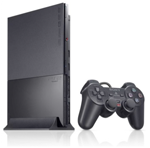[A NOTE FROM HARRY: Please welcome Patrick Moorhead of AMD to Technologizer’s roster of contributors. He’ll be writing both topics relating to his day job and others that simply stem from his experiences as a gadget enthusiast.]
Do you ever feel like the actual battery life on your notebook never quite equals the information that appears in promotional material? For example, you may see “up to five hours,” but actually get about half that. Well, you aren’t alone. I hear it all the time, and if you do a quick Twitter search on the topic, you’ll see lots of discussion.
I can assure you that no devious plot exists to mislead you. It really comes down to a few simple factors.
#1: Measurements are best case: Like a car’s “highway miles per gallon” which gauges the best case (cruising at a sustained speed for an extended period without stop-and-go driving), notebook battery life is typically based on MobileMark 2007. This benchmark primarily measures battery life while the notebook is doing nothing–not even wirelessly connecting to the Internet. A “city-driving” equivalent of notebook battery life doesn’t exist…yet.
#2: Different strokes for different folks: We all use notebooks differently, and therefore will see different battery durations. Some watch HD web videos on YouTube, some may just do email, and some play more games than others. all of which will mean varying battery life. You can see this data from AMD here that shows the phenomenon. (Disclosure: I work for AMD) This also shows that battery life varies depending on the combination of components inside a machine.
#3: Battery life varies over time: The longer you own your notebook, use it, charge, and recharge, over and over again, the more the battery loses its effectiveness. So theoretically, your longest battery life will be on the first day you crack open the packaging. See all the people selling new batteries for old notebooks? Some even say that battery life is variable with heat.
So what should you do?
- Grade battery life on a curve–let’s say, 60% of the claimed performance. If the label says 10 hours, my guess is it’s probably only about 6 hours in real use.
- Ask your retailer and systems providers to provide the “city miles per gallon,” or, using the tried and tested cellphone analogy, “talk-time.” They all have Web sites–and when all else fails, you can ask them over Twitter.
I may have not added back 40% of your battery life, but hopefully you know why you only get 60% of it!
Pat Moorhead is Vice President of Advanced Marketing at AMD. You can find him on his AMD blog, Twitter, FriendFeed, and LinkedIn. His postings are his own opinions and may not represent AMD’s positions, strategies or opinions.

 [NOTE: Response to
[NOTE: Response to  The
The  Has it really been forty-five years this week since Technologizer’s debut? Why, it seems like just a few months. But it’s true–we’ve been covering technology since April, 1964, when CPU speed was measured in picohertz and “satellite radio” was something the CIA used to spy on Castro.
Has it really been forty-five years this week since Technologizer’s debut? Why, it seems like just a few months. But it’s true–we’ve been covering technology since April, 1964, when CPU speed was measured in picohertz and “satellite radio” was something the CIA used to spy on Castro. Responding to the unfavorable economic environment, Sony is slashing the price of its PlayStation 2 gaming console to under $100. The price cut is also aimed at
Responding to the unfavorable economic environment, Sony is slashing the price of its PlayStation 2 gaming console to under $100. The price cut is also aimed at  This better have nothing to do with April Fools’ Day: American Airlines has announced that it’s
This better have nothing to do with April Fools’ Day: American Airlines has announced that it’s  [UPDATE FROM HARRY: Smashing Magazine–which I like–has a wacky sense of humor. And maybe it’s April Fools Day where it is, or close enough.]
[UPDATE FROM HARRY: Smashing Magazine–which I like–has a wacky sense of humor. And maybe it’s April Fools Day where it is, or close enough.] Take one part Facebook, one part Yelp, and one part TripAdvisor. Stir in some Wikipedia, and add a dash of Twitter. You might end up with something a little like
Take one part Facebook, one part Yelp, and one part TripAdvisor. Stir in some Wikipedia, and add a dash of Twitter. You might end up with something a little like  Big 5Words news coming tomorrow!
Big 5Words news coming tomorrow! iPhone developer analytics company Medialets studied piracy on the iPhone, and found a surprising number of applications on the App Store have likely been pirated. Of the 25,000 or so on the service, approximated 5,000 of them have been cracked, allowing users to use them for free.
iPhone developer analytics company Medialets studied piracy on the iPhone, and found a surprising number of applications on the App Store have likely been pirated. Of the 25,000 or so on the service, approximated 5,000 of them have been cracked, allowing users to use them for free.